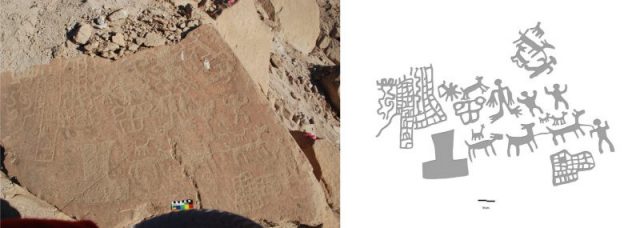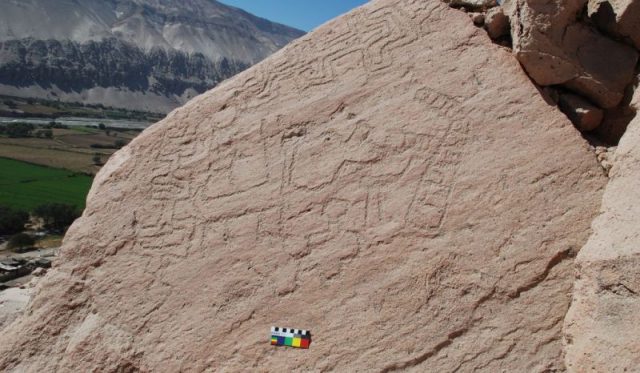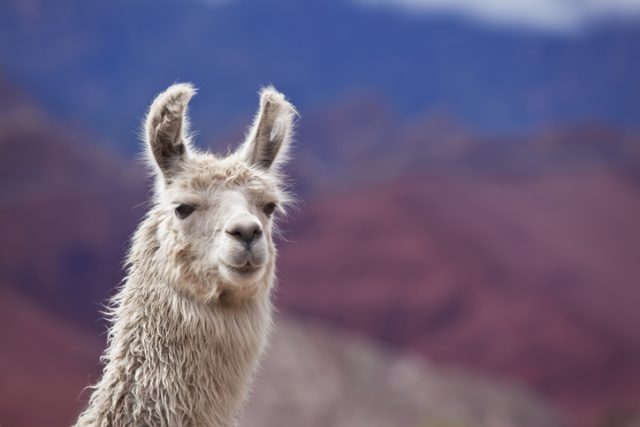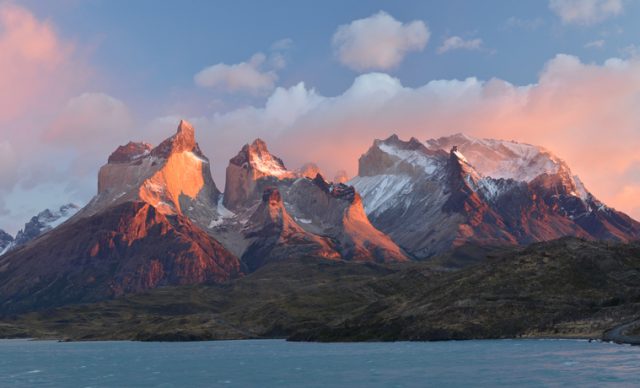Since the beginning of human existence, people have traveled old roads, unmarked trails, and mountain passes. They often leave behind messages, rudimentary maps, and drawings marking the trail as they journey.
In the past, more often than not, people traveled in wagon trains, caravans, and other groups for protection and companionship.
Rugged trails such as these have been found in northern Chile in the Lluta valley about 25 miles from the western coast of the Pacific Ocean.

Cruces de Molinos is an archaeological rock art site carved with camelids (the family including camels, alpacas, vicuñas, and guanacos) and the rhea (an ostrich-like bird). This was a well-traveled road for merchants and a stop along the way about 950 to 1400 AD, before the Incas arrived and settled in the area.
The site incorporates 64 engraved blocks with 27 panels and 225 identified subjects. Caravans of traders followed these well-worn roads that still show the evidence of grooves and furrows.
Coca leaves, textiles, cornflower, huspas (small ritual bags), kowa (a medicinal herb), alcohol, maize liqueur (chicha), and pumpkins were just a few of the items traded.

Members of the caravans performed many rituals before, during, and after their trips to ensure safety and good luck during their travels. Researchers believe Cruces de Molinos may have been a ceremonial site due to the location, related archaeological deposits, and the drawings.
Because the site is not easily reached, many believe it could not have been a hub for traveling caravans as was previously thought.
There are no signs that it was an occupied area, but many camelid, alpaca and llama bones were found, perhaps as an offering or leftovers from a meal.

There are small cemeteries within a mile of the site as well as some remains of a small village with cane and reed foundations and a few pieces of ceramic pottery.
Unfortunately, it is not a protected site — local farmers more interested in getting their crops in than the archeological findings have caused irreparable damage.
An anthropology professor at the University of Tarapacá in Chile, Daniela Valenzuela, was doing a survey in 2000 as part of her bachelor’s degree requirements and found multiple rock art sites, but, according to SmithsonianMag, Valenzuela stated that Cruces de Molinos was the most decorative she had seen.

It is also her belief that Cruces de Molinos was a stop just off the major trade routes that enabled the faithful to give offerings to the goddess Pachamama who ruled over the earth, human fertility, and time; after the offering, the travelers would continue on their way.
Herding and caravans still exist in the area today. Nicholas Tripcevich, a research associate and lab manager at the University of California, Berkeley, claims that, not only were needed goods traded, but also news and stories from other parts of Chile.
In 2007, he rode with a caravan in Peru as they picked up salt from Cotahuasi and delivered it to Apurimac using the old trade routes; they made a stop at Cruces de Molinos to give offerings to Pachamama. Tripcevich claims that modern caravans are few and far between as most modern Chileans aren’t interested in the nomadic way of life in caravans.
In the 1980s, roads were improved, and now trucks are the preferred way to move goods. With much civil unrest in the area, trucks are also safer and move more quickly.
Read another story from us: Ancient Hidden City Discovered Under Lake Titicaca
Tripcevich believes llamas are more cost-efficient as they can be put out to graze for food and require no maintenance. “The animals are certainly still there. It’s very low cost. [The caravans] could come back.”
